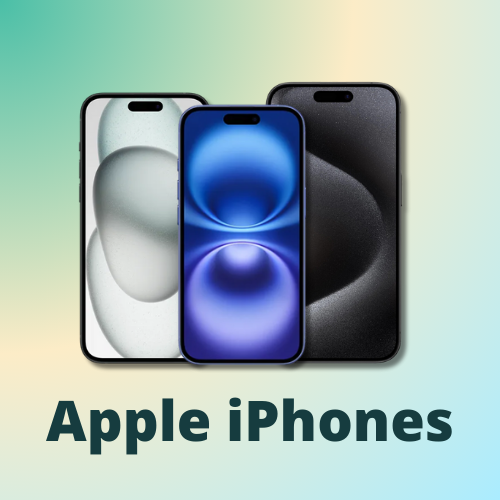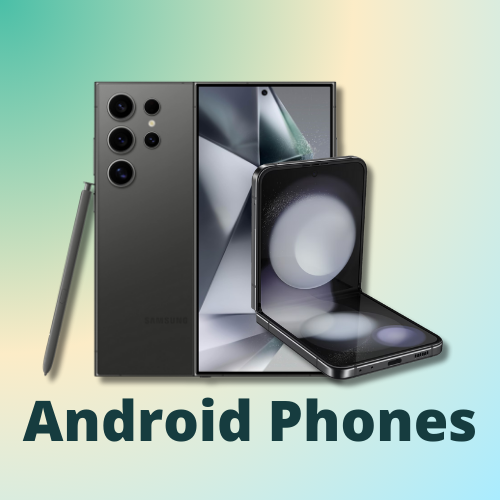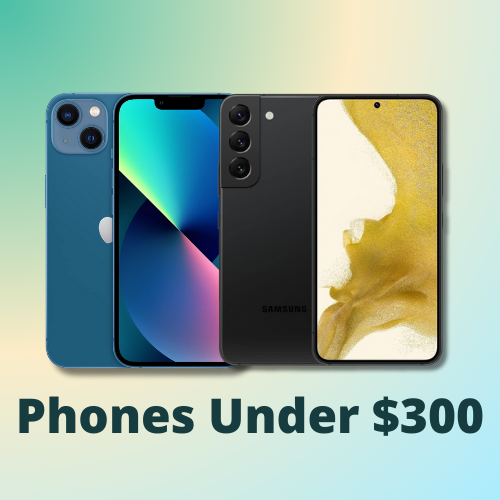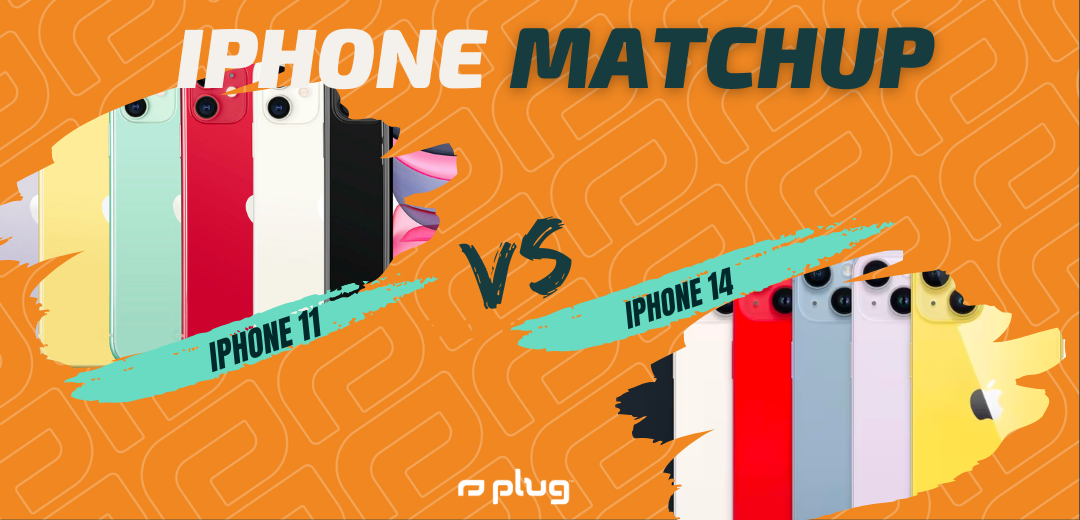Comparing the iPhone 11 and iPhone 13
When it comes to upgrading your smartphone, it's essential to make an informed decision. In the world of Apple, two popular options stand out: the iPhone 11 and the iPhone 13. These two models have both similarities and differences that can impact your user experience. In this article, we will take a close look at the key features, specifications, and design elements of the iPhone 11 and iPhone 13 to help you decide which one is the right fit for you.
Understanding the Basics: iPhone 11 vs iPhone 13
Before we dive into the nitty-gritty details, let's get acquainted with the basic features of both the iPhone 11 and iPhone 13. Both models boast remarkable build quality, sleek designs, and a familiar user interface that Apple enthusiasts have come to love. However, there are several notable upgrades in the iPhone 13 that set it apart from its predecessor, the iPhone 11.
When it comes to the iPhone 11 and iPhone 13, it's all about the power under the hood. The iPhone 11 is equipped with Apple's A13 Bionic chip, a powerful processor that delivers lightning-fast performance and efficient power management. However, the iPhone 13 takes it up a notch with the more advanced A15 Bionic chip. This upgrade translates to even faster processing speeds, improved graphics, and enhanced overall performance. Whether you're multitasking, gaming, or editing photos and videos, the iPhone 13 is designed to handle it all with ease.
Storage capacity is another area where the iPhone 13 shines. While the iPhone 11 offers a base storage of 64GB, the iPhone 13 starts at 128GB, giving you more room to store your photos, videos, apps, and files. Whether you're a casual user or a content creator, the increased storage options of the iPhone 13 provide the flexibility and convenience you need.
Another significant difference lies in the display technology. While the iPhone 11 features a Liquid Retina LCD display, the iPhone 13 showcases Apple's cutting-edge Super Retina XDR OLED display. This upgrade offers deeper blacks, vibrant colors, and better contrast for a truly immersive visual experience. Whether you're watching movies, playing games, or browsing the web, the iPhone 13's display will captivate your senses and bring your content to life.
Design plays a crucial role in our smartphone choices, so let's compare the aesthetics of the iPhone 11 and iPhone 13. Both models share a similar square-edged design that exudes elegance and sophistication. However, the iPhone 13 introduces a smaller notch, resulting in a larger screen-to-body ratio. This means more screen real estate for your videos, games, and apps. Whether you're streaming your favorite TV shows or working on important documents, the iPhone 13's larger display will enhance your productivity and entertainment experience.
Not only has the iPhone 13 improved in looks, but it has also become more durable. With an industry-leading Ceramic Shield front cover, the iPhone 13 offers enhanced drop protection, making it more resilient to accidental slips and falls. In contrast, the iPhone 11 features the standard glass front cover, which may not provide the same level of durability. Additionally, the iPhone 13 boasts an IP68 rating for water and dust resistance, giving you peace of mind even in challenging environments. Whether you're caught in a sudden rain shower or accidentally drop your phone in a puddle, the iPhone 13 is designed to withstand life's little accidents.
As you can see, the iPhone 13 brings a host of improvements and upgrades over its predecessor, the iPhone 11. From the powerful A15 Bionic chip to the stunning Super Retina XDR OLED display, the iPhone 13 is a true powerhouse that offers an unparalleled user experience. Whether you're a tech enthusiast or a casual user, the iPhone 13 is sure to impress with its performance, design, and durability.
Delving into the Display
When it comes to choosing a smartphone, one of the primary aspects we consider is the display. After all, it's the window through which we interact with our devices and consume content. Let's take a closer look at the screen size, resolution, and technology of the iPhone 11 and iPhone 13, two popular models that have captured the attention of tech enthusiasts and casual users alike.
Screen Size and Resolution Comparison
The iPhone 11, released in 2019, sports a 6.1-inch Liquid Retina LCD display with a resolution of 1792 x 828 pixels. This display offers vibrant colors and sharp images, making it a reliable choice for everyday use. However, Apple didn't stop there. With the release of the iPhone 13, they took things up a notch.
The iPhone 13, launched in 2021, features a 6.1-inch Super Retina XDR OLED display with a resolution of 2532 x 1170 pixels. This means that the iPhone 13 delivers richer details, deeper blacks, and an overall more immersive visual experience. Whether you're watching videos, playing games, or simply scrolling through your social media feeds, the iPhone 13's display offers a significant upgrade, enhancing every moment and bringing content to life in a way that's hard to ignore.
Display Technology: LCD vs OLED
One of the most substantial differences between the iPhone 11 and iPhone 13 lies in their display technology. The iPhone 11 features an LCD (Liquid Crystal Display), a tried-and-true technology known for its accurate color reproduction and wide viewing angles. This means that no matter how you hold your iPhone 11, you can expect consistent colors and a pleasant viewing experience.
On the other hand, the iPhone 13 boasts an OLED (Organic Light-Emitting Diode) display, which takes things to a whole new level. OLED technology offers several advantages over LCD. First and foremost, it provides deeper blacks, higher contrast ratios, and more vibrant colors. This is because each pixel in an OLED display is individually lit, allowing for precise control over brightness and color reproduction.
Not only does the OLED technology used in the iPhone 13 result in a visually stunning display, but it also contributes to the overall battery life of the device. Since OLED displays can turn off individual pixels when displaying true blacks, they are more energy-efficient compared to LCD displays. This means that you can enjoy a more immersive visual experience on your iPhone 13 without worrying too much about draining your battery.
In conclusion, the display is a crucial factor to consider when choosing a smartphone. The iPhone 11 and iPhone 13 offer different display technologies and improvements in screen size and resolution. Whether you prioritize accurate color reproduction and wide viewing angles or crave deeper blacks and vibrant colors, both models have their own strengths. Ultimately, it's up to you to decide which display technology and features align with your preferences and enhance your overall smartphone experience.
Performance and Processing Power
Beyond the aesthetics and display, the performance and processing power of a smartphone are essential factors to consider. Let's take a look at how the iPhone 11 and iPhone 13 compare in this area.
When it comes to performance, both the iPhone 11 and iPhone 13 are powerhouses in their own right. The iPhone 11 is equipped with the A13 Bionic chip, which delivers exceptional speed and responsiveness. This chipset is designed to handle demanding tasks with ease, whether it's gaming, multitasking, or running resource-intensive apps.
However, Apple didn't stop there. With the iPhone 13, they have taken performance to a whole new level. The iPhone 13 features the upgraded A15 Bionic chip, which offers improved CPU and GPU performance. This means you can expect even faster app launches, smoother animations, and an overall better user experience. Whether you're editing videos, playing graphics-intensive games, or using augmented reality apps, the iPhone 13's processing power will not disappoint.
Chipset Evolution: A13 Bionic vs A15 Bionic
Apple's A-series chips have been at the forefront of smartphone performance, and the iPhone 11 and iPhone 13 are no exceptions. The iPhone 11 packs the A13 Bionic chip, a powerhouse that delivers exceptional speed and responsiveness. However, the iPhone 13 shines even brighter with its upgraded A15 Bionic chip.
The A15 Bionic chip offers improved CPU and GPU performance, allowing you to multitask seamlessly and enjoy graphically demanding games without any hiccups. This enhanced processing power also contributes to faster app launches, smoother animations, and overall better performance across the board.
With the A15 Bionic chip, Apple has also focused on machine learning capabilities. This means that the iPhone 13 can handle complex tasks like image recognition, natural language processing, and augmented reality with incredible efficiency. Whether you're using Siri, taking stunning photos, or exploring the latest AR experiences, the A15 Bionic chip ensures a smooth and responsive performance.
Battery Life and Charging Capabilities
When it comes to battery life, Apple strives to provide an optimal experience for its users. The iPhone 11 offers a respectable battery life, capable of lasting throughout the day with moderate usage. However, the iPhone 13 extends that longevity even further.
With the iPhone 13, you can expect improved battery performance, thanks to Apple's advancements in optimization and power management. This means you can enjoy your favorite apps, games, and multimedia content for more extended periods without worrying about running out of juice.
In addition to improved battery life, the iPhone 13 also introduces new charging capabilities. Both the iPhone 11 and iPhone 13 support fast charging, allowing you to quickly recharge your device when needed. However, the iPhone 13 takes it a step further with the introduction of MagSafe.
MagSafe is a magnetic charging technology that allows for convenient wireless charging and compatibility with a wide range of MagSafe accessories. With MagSafe, you can simply snap on a MagSafe charger or accessory to the back of your iPhone 13, eliminating the need for cables and providing a seamless charging experience.
Whether you prefer traditional fast charging or the convenience of wireless charging with MagSafe, both the iPhone 11 and iPhone 13 offer reliable and efficient charging options to keep you powered up throughout the day.
Camera Capabilities: A Closer Look
Smartphone photography has become a crucial aspect of our daily lives, and Apple has always focused on delivering top-notch camera capabilities. Let's examine the rear and front cameras of the iPhone 11 and iPhone 13.
Rear Camera Comparison
The iPhone 11 features a dual-camera system, incorporating a 12-megapixel wide and ultra-wide lens combination. This setup allows you to capture stunning landscapes, architectural marvels, and group photos with ease.
On the other hand, the iPhone 13 elevates the photography game even further with its advanced dual-camera system. With larger pixels and sensor-shift optical image stabilization, the iPhone 13 delivers improved low-light performance and enhanced image stabilization. Whether you're capturing breathtaking landscapes or precious moments with loved ones, the iPhone 13's camera system ensures exceptional results.
Front Camera Comparison: Selfie Game
Selfies have become a cultural norm, and Apple recognizes the significance of a high-quality front camera. The iPhone 11 features a 12-megapixel TrueDepth camera, capable of capturing detailed selfies with accurate skin tones.
Building upon this foundation, the iPhone 13 introduces a 12-megapixel TrueDepth camera with sensor-shift optical image stabilization. This innovative addition ensures that your selfies are sharp, well-composed, and blur-free. The improved low-light performance further enhances selfie quality, allowing you to capture stunning self-portraits in any lighting condition.
Operating System and Software Features
Apple's operating system, iOS, has always been renowned for its seamless integration, intuitive interface, and plethora of features. Let's explore what's new in iPhone 13's iOS compared to the iPhone 11.
iOS Updates: What's New in iPhone 13
The iPhone 13 ships with iOS 15, the latest iteration of Apple's operating system. iOS 15 introduces a range of new features and enhancements, including improved FaceTime capabilities, enhanced privacy settings, and redesigned notifications. These updates contribute to an even more intuitive and personalized user experience, setting the iPhone 13 apart from the iPhone 11.
Software Enhancements and Additional Features
Aside from the noticeable iOS updates, the iPhone 13 also includes various software enhancements and additional features that provide an overall richer user experience. These improvements include advanced machine learning algorithms, updated image processing capabilities, and an array of editing tools to enhance your photos and videos.
Additionally, the iPhone 13 offers compatibility with Apple's MagSafe accessories, allowing for added convenience and personalization. With accessories like MagSafe wallets, chargers, and mounts, you can make the most out of your iPhone 13's capabilities while adding a touch of personal style.
Conclusion
Choosing between the iPhone 11 and iPhone 13 ultimately depends on your priorities and preferences. If you're looking for the latest technology, enhanced performance, and cutting-edge features, the iPhone 13 is the clear winner. However, if you're content with a solid smartphone experience and a more affordable option, the iPhone 11 remains a reliable choice.
Consider your usage patterns, budget, and desired features when making your decision. Whichever model you choose, both the iPhone 11 and iPhone 13 deliver the excellence and innovation that Apple is known for.







